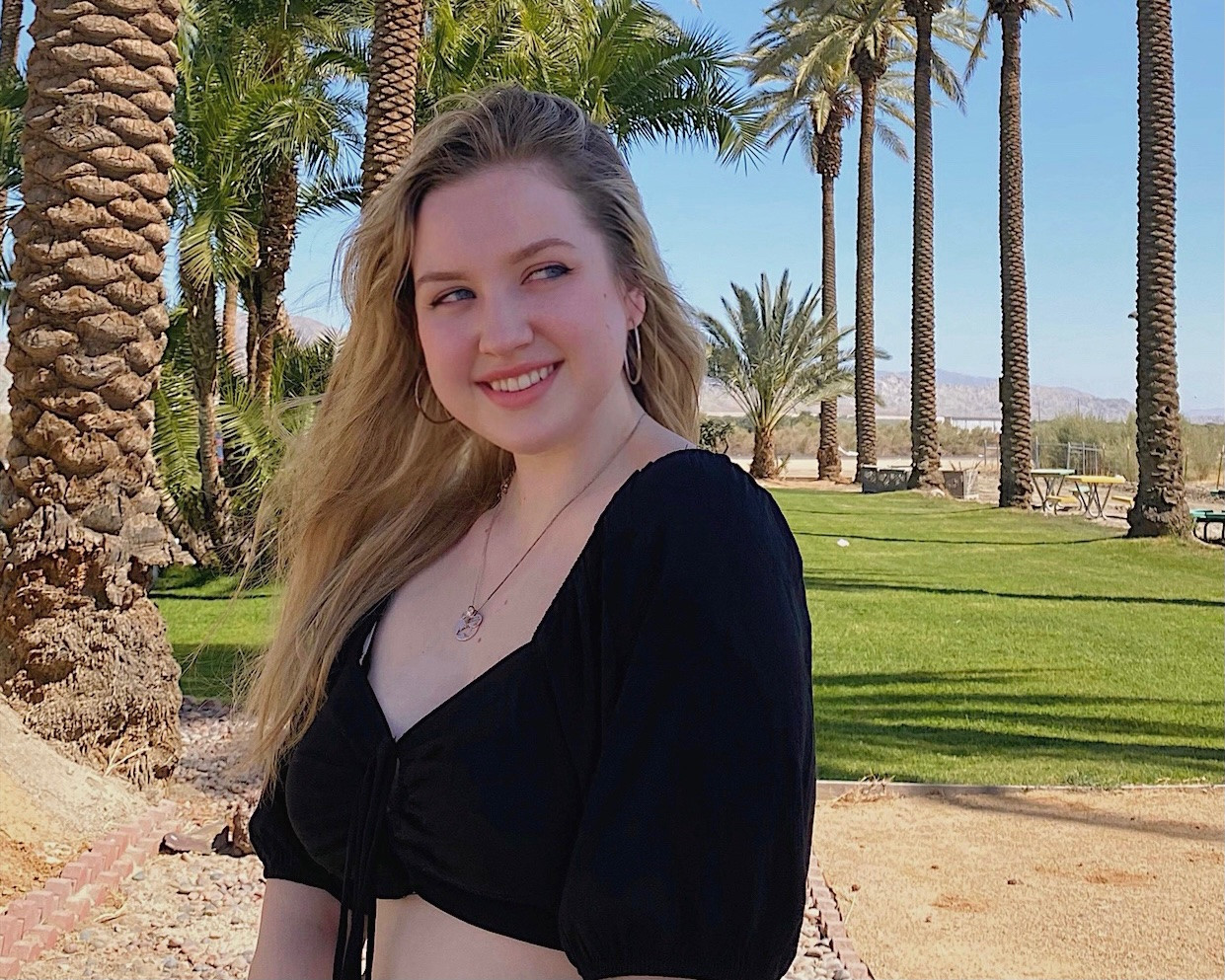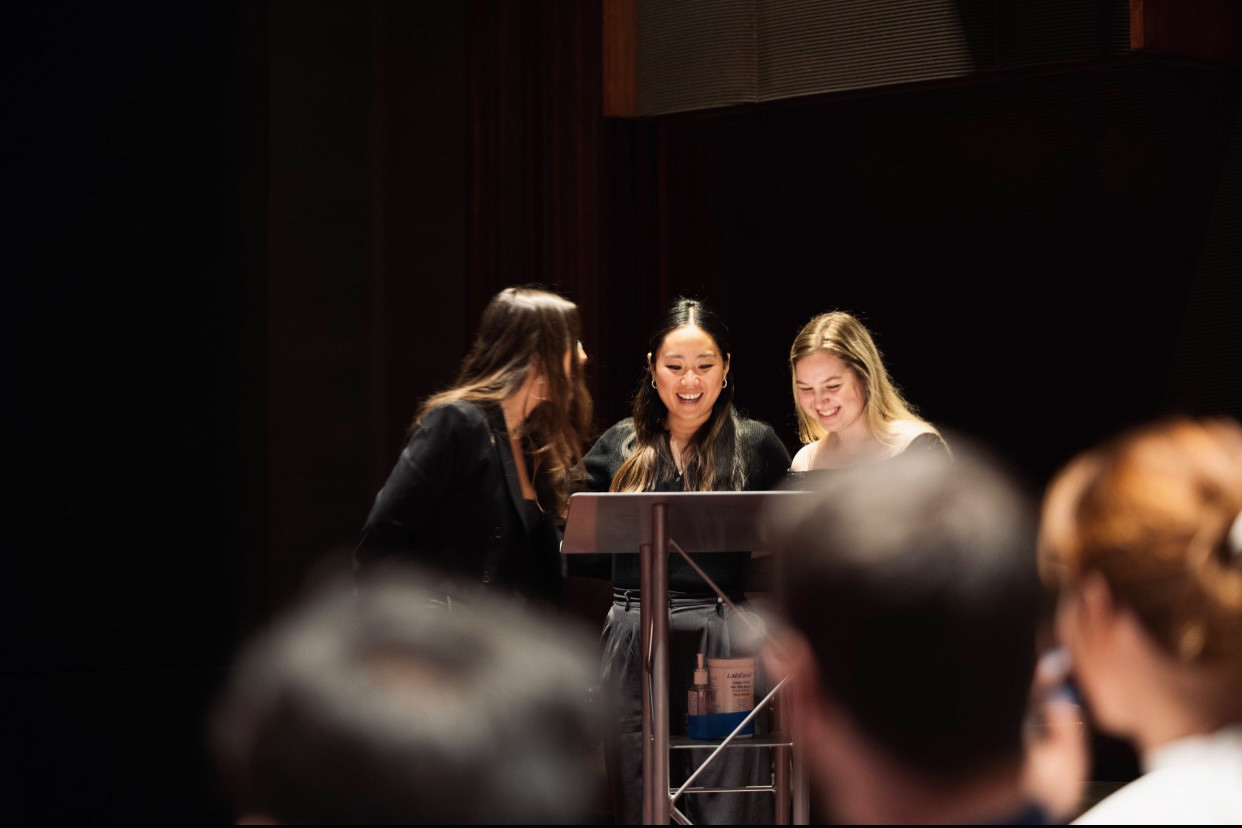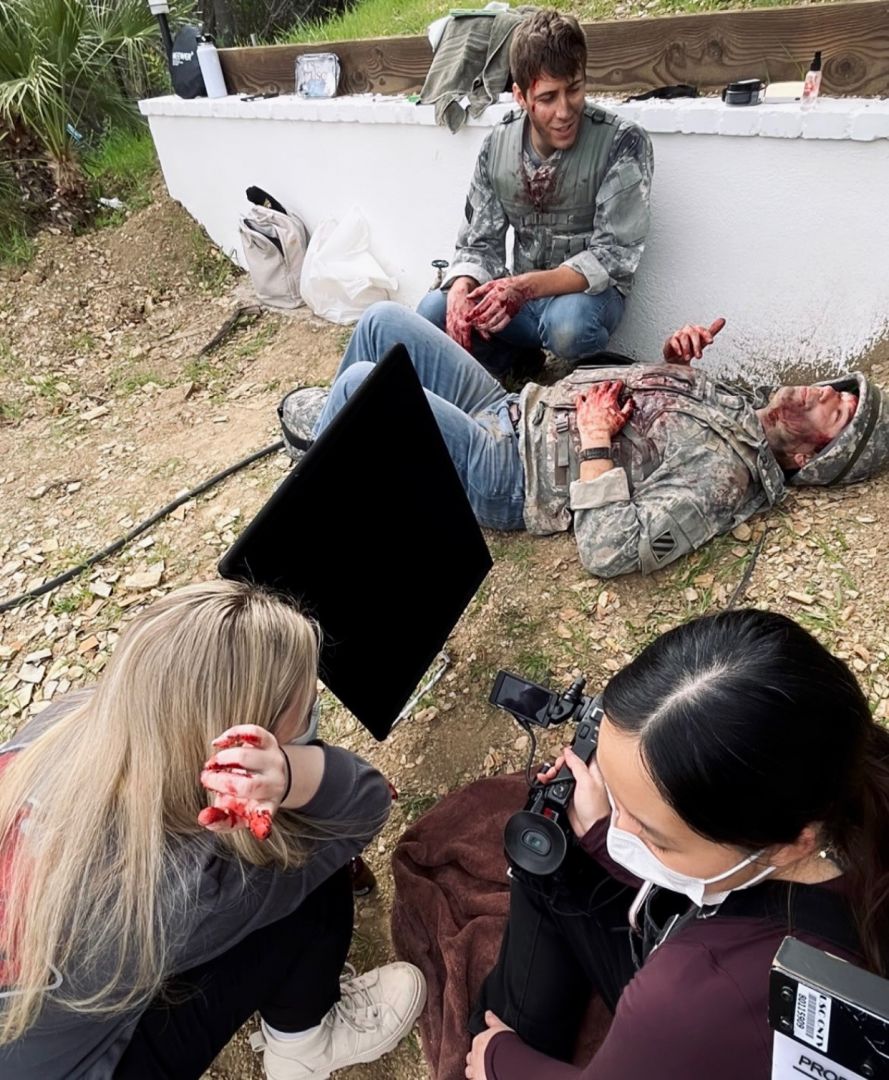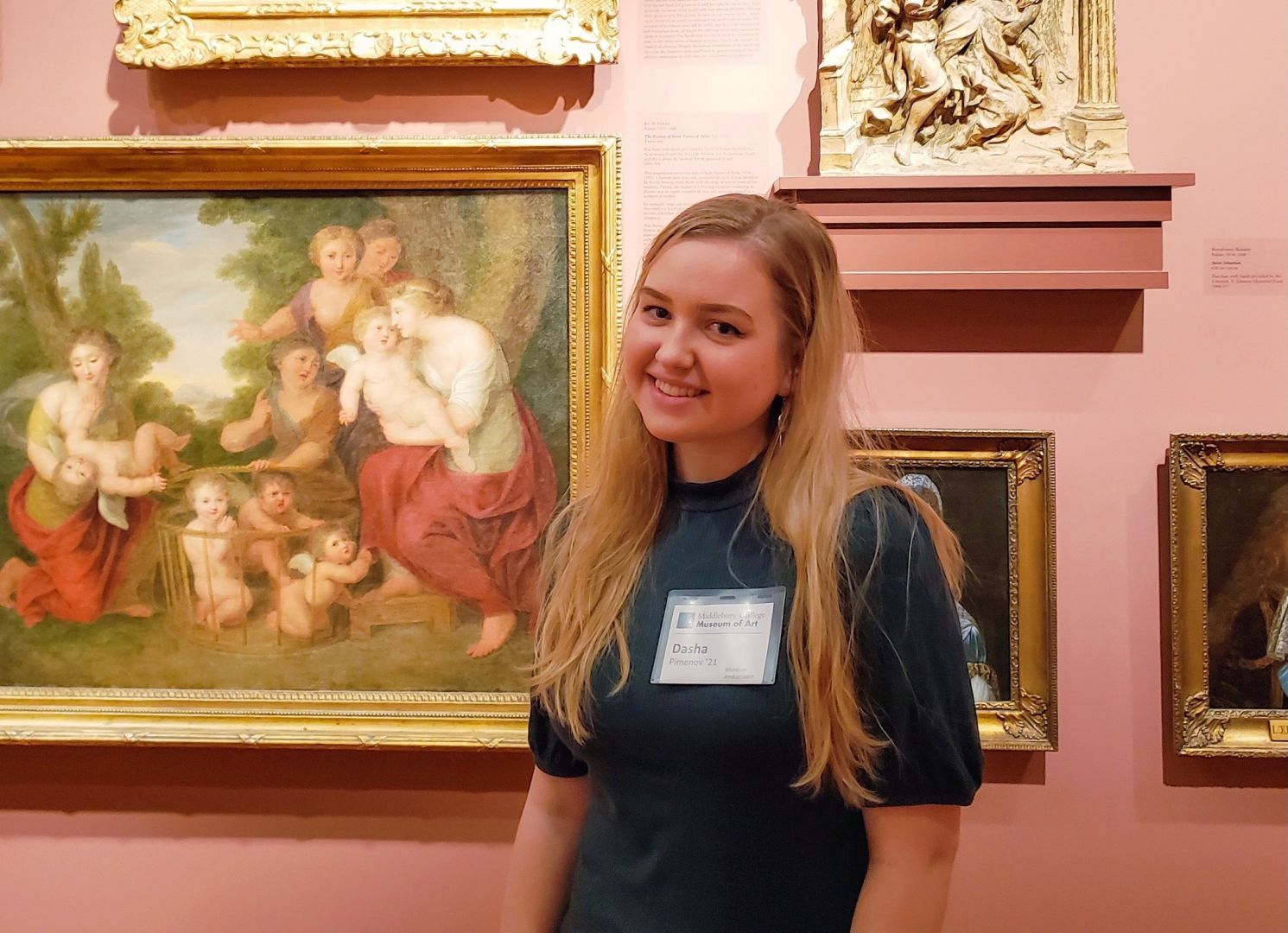Meet Dasha Pimenov | Filmmaker & Historian

We had the good fortune of connecting with Dasha Pimenov and we’ve shared our conversation below.
Hi Dasha, why did you pursue a creative career?
I never intended to pursue the entertainment industry, actually. Growing up, I was always infatuated with the past, so I naturally gravitated toward the humanities – history, classics, and philosophy, specifically. I was still uncertain about the career track I wanted to explore, so I took film theory classes for the fun of analyzing movies. There was something exhilarating about watching sounds and images dance on a silver screen and, even more so, attempting to understand how a room full of people experienced the same riveting emotions from a mere visual simulation. Dissecting each scene with the entire class created an inherent sense of community; art suddenly felt larger than life. It gave meaning, intimacy, and understanding. But this all felt like escapism to me every time our discussion sessions came to an end. I was, once again, forced to return to my other studies and responsibilities while juggling four part-time jobs.
After studying abroad, I began to assume that cultural diplomacy was the best fit for me — and so did the rest of my friends and mentors. It wasn’t until my senior year that I spontaneously decided to apply to the MFA program at the University of Southern California with a documentary short about my friend and her experience as a first-generation student. I still don’t understand what pushed me to this decision; I felt extra adventurous that day, I suppose (it’s the Sag energy). I was surprised by my admission to one of the top film schools in the world. Here I was, a fresh-out-of-college, first-generation student deciding between International Relations at the University of Chicago and Film & TV Production at the School of Cinematic Arts, USC in the middle of a pandemic. I had never felt so fortunate and yet so conflicted at the same time. Do I choose stability or risk? Regret or…I guess regret again for not choosing the other option? I remember the imposter syndrome and anxiety that came with making a difficult decision. But the aha moment that struck me in the middle of my French New Wave class is what I recall most vividly — a special shout-out to Professor Christian Keathley. Not to be a pretentious film snob, but you know that part in François Truffaut’s “400 Blows” when Antoine escapes the disciplinary school? He runs towards the sea, and there’s a shot of him just running, running, and running. I remember leaning in and wondering: what is the point of this excruciatingly long take? I wait and wait, growing more impatient as the melancholy strings of a mandolin play with his quiet panting. Finally, a freeze-frame of Antoine’s confused face when he reaches the water. FIN —read the credits. Wait, what?! I sat there for about a minute, processing the ending as the credits rolled. I had no idea what I felt, but whatever it was, it was intense. It’s hard to explain, but I just knew I had to go into filmmaking, right there and then.



Let’s talk shop? Tell us more about your career, what can you share with our community?
Maybe this stems from my liberal arts background, but I don’t really believe in – or rather, strongly disagree with – the idea of pigeon-holing. The beauty of art and all creative things lies in its intersectionality and fluidity of thought. I try to exercise this mindset by experimenting with diverse mediums or taking on different creative roles when possible.
My journey began with videographic essays, which I consider an underrated form of artistic expression and interpretation; it is a fascinating intersection of cinema graphics, storytelling, and media analysis. I highly suggest reading “The Videographic Essay: Practice and Pedagogy,” written by my Middlebury professors. The versatility of this film scholarship inspired me to undertake a multi-media, quasi-documentary, videographic essay on the misconceptions of Soviet comedies in relation to my parents’ Brezhnev Era upbringing. My film thesis followed with another essay, this time in a traditional scholarly form, a thirty-six-page article published by the James Blair Historical Review — “The Grade School Brigade: How Advertisements Sold the Cold War and Taught Children to Play with Politics, 1950-1959.” I grew more interested in the power of short films by the start of my MFA studies at USC. In fact, “Yankee Doodle,” my recent short that explores the theme of inner turmoil and combat PTSD, has just entered the festival circuit. Art is all about experimenting and, perhaps most importantly, collaboration! I am now helping to produce an MFA USC thesis film, “The Lights Above,” a 1940s period piece by Luke Salewski. I am also thrilled to be co-writing and co-directing a film about trailblazing women in ecological conservation with a fellow Trojan, Jacqueline Rosenthal.
Now, to your following question: Was it easy? I don’t think it ever is for low-income students of immigrant parents. It all begins with accessibility. By that, I mean access to the tools and resources you need to succeed and eventually thrive in the field you wish to pursue. This becomes a difficult undertaking when 1) you don’t have generational wealth or a safety net to fall back on if your finances start to dwindle – and they will at some point or another 2) you don’t really know anyone in the movie-making business 3) the industry you are trying to break into already has a notorious reputation for its gatekeeping and nepotistic tendencies. So what do you do? Well, to change the system, you first need to understand it. I try to avoid the term “networking;” it implies a level of superficiality. So, I learned to reframe it. I try to cultivate relationships and friendships wherever I go. I was fortunate enough to have learned this from my mentors – Shawn Ryan, Emmy Award-nominated writer, producer, and showrunner of “S.W.A.T,” and Philip Fier, former VP of Sony Pictures and 20th Century Fox. USC has opened even wider doors for me with its faculty members who continue to inspire and support me. Rick Shaine, Jeremy Royce, Tom Abrams, James Savoca, Mary Sweeney, Barnet Kellman, Carolyn Manetti, F.J. Pratt, and Bruce Block have made this a life-changing experience for me. I continue to live by the motto, “she did her best, and God did the rest.”
If you had a friend visiting you, what are some of the local spots you’d want to take them around to?
Oh, great question! Well, I’m from LA, so it all depends on the vibe, right? If we’re talking spring/summer, then expect a trip to the Huntington Library, Art Museum, and Botanical Gardens or a hike at Griffith park. More of a beach person? I got you. Let’s try Long Beach Shoreline Village, it’s one of my favorite spots. No one can refuse a tranquil coastline with local shops, a lighthouse, and waterfront dining. But make sure to pack your bag for tomorrow because we’re going on a quick road trip to Palm Springs, where we’ll admire the mid-century modern architecture, bathe in those natural minerals waters, and sip on some date shakes (they’re good, I promise!). Oh, and we’re getting In-N-Out on the way back just FYI. We’ll arrive in LA just in time to catch the sunset from Griffith Observatory, but we need to make sure we’re on the rooftop. Truly a marvelous sight. You’ll contemplate staying in LA but then remember the horrendous traffic we had to battle through to get here. I make the obvious statement that you haven’t actually been to LA until you’ve visited the Happiest Place on Earth. We wrap up your trip by going to Disneyland. We’re on a budget? I get it, girl. It’s rough out here. It’s okay. That’s why we have Downtown Disney. You can still feel the magic there, as long as you get the churro!




Who else deserves some credit and recognition?
As students, the first principle we are taught when writing a paper or undertaking a project is to credit our sources and fellow collaborators. Such a simple, yet crucial practice should extend beyond the realm of academia, so I thank you for asking this question.
My shoutout goes to all my friends and mentors who have made my odyssey as a film creative possible. First and foremost, to my family. I have been blessed with incredibly supportive parents whom I consider to be my greatest teachers in the school of life. My sister, my best friend whose cathartic presence not only helps me find humor and joy in the face of problems but also challenges me to fight through them. She is my greatest critic and my biggest fan.
The Film and Media Culture Department at Middlebury College, VT has inspired me in more ways than I can ever imagine. It was in this private liberal arts institution that I discovered my passion for cinema and began experimenting with media arts — the Videographic Essay & French New Wave classes literally changed my life! Thank you, Ethan, Jason, Ioana, and Christian. Shoutout to the School of Cinematic Arts, USC faculty who never cease to inspire and amaze me throughout my MFA career. I would also like to extend my gratitude to College Match LA, an organization that made higher education accessible to a low-income, first-generation student like me.
Linkedin: https://www.linkedin.com/in/dasha-pimenov-creative/
Image Credits
“Yankee Doodle” Stills — Jennifer Yi “Yankee Doodle” BTS — Remi Garfinkle USC 508 Short Films Premiere — Jesse Pinho
